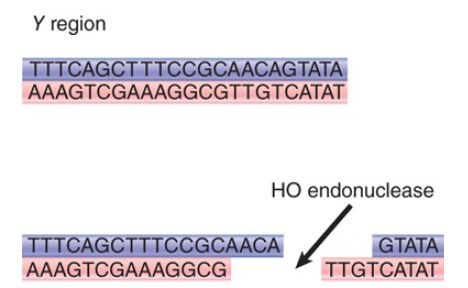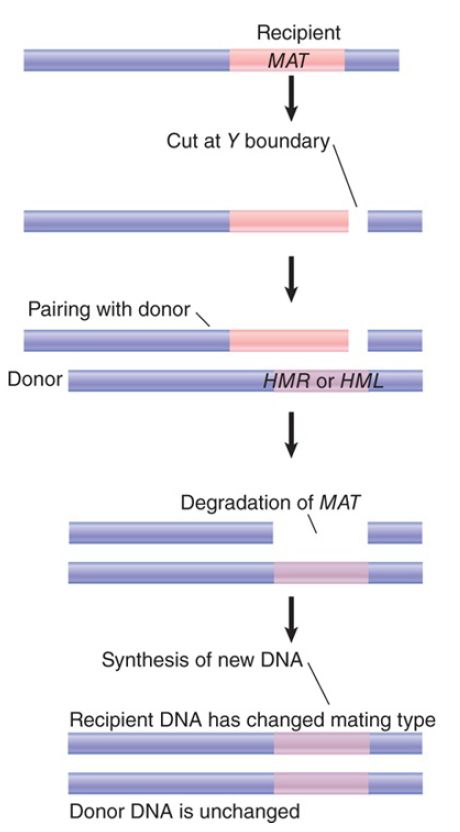

النبات

مواضيع عامة في علم النبات

الجذور - السيقان - الأوراق

النباتات الوعائية واللاوعائية

البذور (مغطاة البذور - عاريات البذور)

الطحالب

النباتات الطبية


الحيوان

مواضيع عامة في علم الحيوان

علم التشريح

التنوع الإحيائي

البايلوجيا الخلوية


الأحياء المجهرية

البكتيريا

الفطريات

الطفيليات

الفايروسات


علم الأمراض

الاورام

الامراض الوراثية

الامراض المناعية

الامراض المدارية

اضطرابات الدورة الدموية

مواضيع عامة في علم الامراض

الحشرات


التقانة الإحيائية

مواضيع عامة في التقانة الإحيائية


التقنية الحيوية المكروبية

التقنية الحيوية والميكروبات

الفعاليات الحيوية

وراثة الاحياء المجهرية

تصنيف الاحياء المجهرية

الاحياء المجهرية في الطبيعة

أيض الاجهاد

التقنية الحيوية والبيئة

التقنية الحيوية والطب

التقنية الحيوية والزراعة

التقنية الحيوية والصناعة

التقنية الحيوية والطاقة

البحار والطحالب الصغيرة

عزل البروتين

هندسة الجينات


التقنية الحياتية النانوية

مفاهيم التقنية الحيوية النانوية

التراكيب النانوية والمجاهر المستخدمة في رؤيتها

تصنيع وتخليق المواد النانوية

تطبيقات التقنية النانوية والحيوية النانوية

الرقائق والمتحسسات الحيوية

المصفوفات المجهرية وحاسوب الدنا

اللقاحات

البيئة والتلوث


علم الأجنة

اعضاء التكاثر وتشكل الاعراس

الاخصاب

التشطر

العصيبة وتشكل الجسيدات

تشكل اللواحق الجنينية

تكون المعيدة وظهور الطبقات الجنينية

مقدمة لعلم الاجنة


الأحياء الجزيئي

مواضيع عامة في الاحياء الجزيئي


علم وظائف الأعضاء


الغدد

مواضيع عامة في الغدد

الغدد الصم و هرموناتها

الجسم تحت السريري

الغدة النخامية

الغدة الكظرية

الغدة التناسلية

الغدة الدرقية والجار الدرقية

الغدة البنكرياسية

الغدة الصنوبرية

مواضيع عامة في علم وظائف الاعضاء

الخلية الحيوانية

الجهاز العصبي

أعضاء الحس

الجهاز العضلي

السوائل الجسمية

الجهاز الدوري والليمف

الجهاز التنفسي

الجهاز الهضمي

الجهاز البولي


المضادات الميكروبية

مواضيع عامة في المضادات الميكروبية

مضادات البكتيريا

مضادات الفطريات

مضادات الطفيليات

مضادات الفايروسات

علم الخلية

الوراثة

الأحياء العامة

المناعة

التحليلات المرضية

الكيمياء الحيوية

مواضيع متنوعة أخرى

الانزيمات
Unidirectional Gene Conversion Is Initiated by the Recipient MAT Locus
المؤلف:
JOCELYN E. KREBS, ELLIOTT S. GOLDSTEIN and STEPHEN T. KILPATRICK
المصدر:
LEWIN’S GENES XII
الجزء والصفحة:
17-4-2021
2488
Unidirectional Gene Conversion Is Initiated by the Recipient MAT Locus
KEY CONCEPTS
- Mating-type switching is initiated by a double-strand break made at the MAT locus by the HO endonuclease.
- The recombination event is a synthesis-dependent strand-annealing reaction.
A switch in mating type is accomplished by a gene conversion in which the recipient site (MAT) acquires the sequence of the donor type (HML or HMR). Sites needed for the recombination have been identified by mutations at MAT that prevent switching. The unidirectional nature of the process is indicated by lack of mutations in HML or HMR.
The mutations identify a site at the right boundary of Y at MAT that is crucial for the switching event. The nature of the boundary is shown by analyzing the locations of these point mutations relative to the site of switching (this is done by examining the results of rare switches that occur in spite of the mutation). Some mutations lie within the region that is replaced (and thus disappear from MAT after a switch), whereas others lie just outside the replaced region (and therefore continue to impede switching). Thus, sequences both within and outside the replaced region are needed for the switching event.
Switching is initiated by a DSB close to the Y–Z boundary that coincides with a site that is sensitive to attack by DNase. (This is a common feature of chromosomal sites that are involved in initiating transcription or recombination.) It is recognized by the endonuclease encoded by the HO locus. The HO endonuclease makes a staggered DSB just to the right of the Y boundary.
Cleavage generates the single-stranded ends of four bases illustrated in FIGURE 1. The nuclease does not attack mutant MAT loci that cannot switch. Deletion analysis shows that most or all of the sequence of 24 bp surrounding the Y junction is required for cleavage in vitro. The recognition site is relatively large for an endonuclease, and it occurs only at the three mating-type cassettes.

FIGURE 1. HO endonuclease cleaves MAT just to the right of the Y region, which generates sticky ends with a 4-base overhang.
Only the MAT locus, and not the HML or HMR locus, is a target for the endonuclease. It seems plausible that the same mechanisms that keep the silent cassettes from being transcribed also keep them inaccessible to the HO endonuclease. This inaccessibility ensures that switching is unidirectional.
The reaction triggered by the cleavage is illustrated schematically in FIGURE 2 in terms of the general reaction between donor and recipient regions. The recombination occurs through an SDSA mechanism, as described earlier. As expected, the stages following the initial cut require the enzymes involved in general recombination. Mutations in some of these genes prevent switching. In fact, studies of switching at the MAT locus were important in the development of the SDSA model.

FIGURE 2. Cassette substitution is initiated by a double-strand break in the recipient (MAT) locus and may involve pairing on either side of the Y region with the donor (HMR or HML) locus.
 الاكثر قراءة في مواضيع عامة في الاحياء الجزيئي
الاكثر قراءة في مواضيع عامة في الاحياء الجزيئي
 اخر الاخبار
اخر الاخبار
اخبار العتبة العباسية المقدسة

الآخبار الصحية















 قسم الشؤون الفكرية يصدر كتاباً يوثق تاريخ السدانة في العتبة العباسية المقدسة
قسم الشؤون الفكرية يصدر كتاباً يوثق تاريخ السدانة في العتبة العباسية المقدسة "المهمة".. إصدار قصصي يوثّق القصص الفائزة في مسابقة فتوى الدفاع المقدسة للقصة القصيرة
"المهمة".. إصدار قصصي يوثّق القصص الفائزة في مسابقة فتوى الدفاع المقدسة للقصة القصيرة (نوافذ).. إصدار أدبي يوثق القصص الفائزة في مسابقة الإمام العسكري (عليه السلام)
(نوافذ).. إصدار أدبي يوثق القصص الفائزة في مسابقة الإمام العسكري (عليه السلام)


















